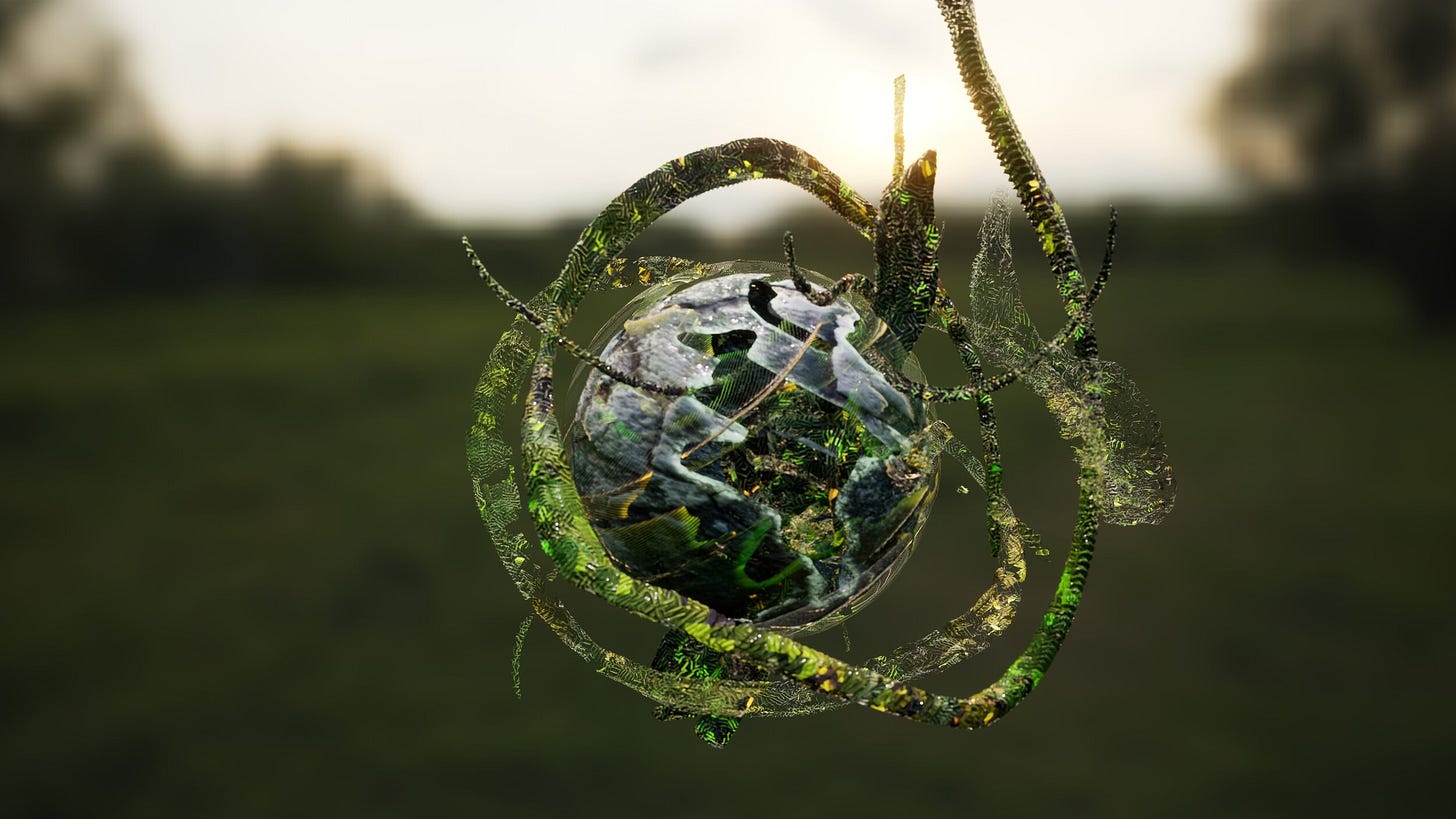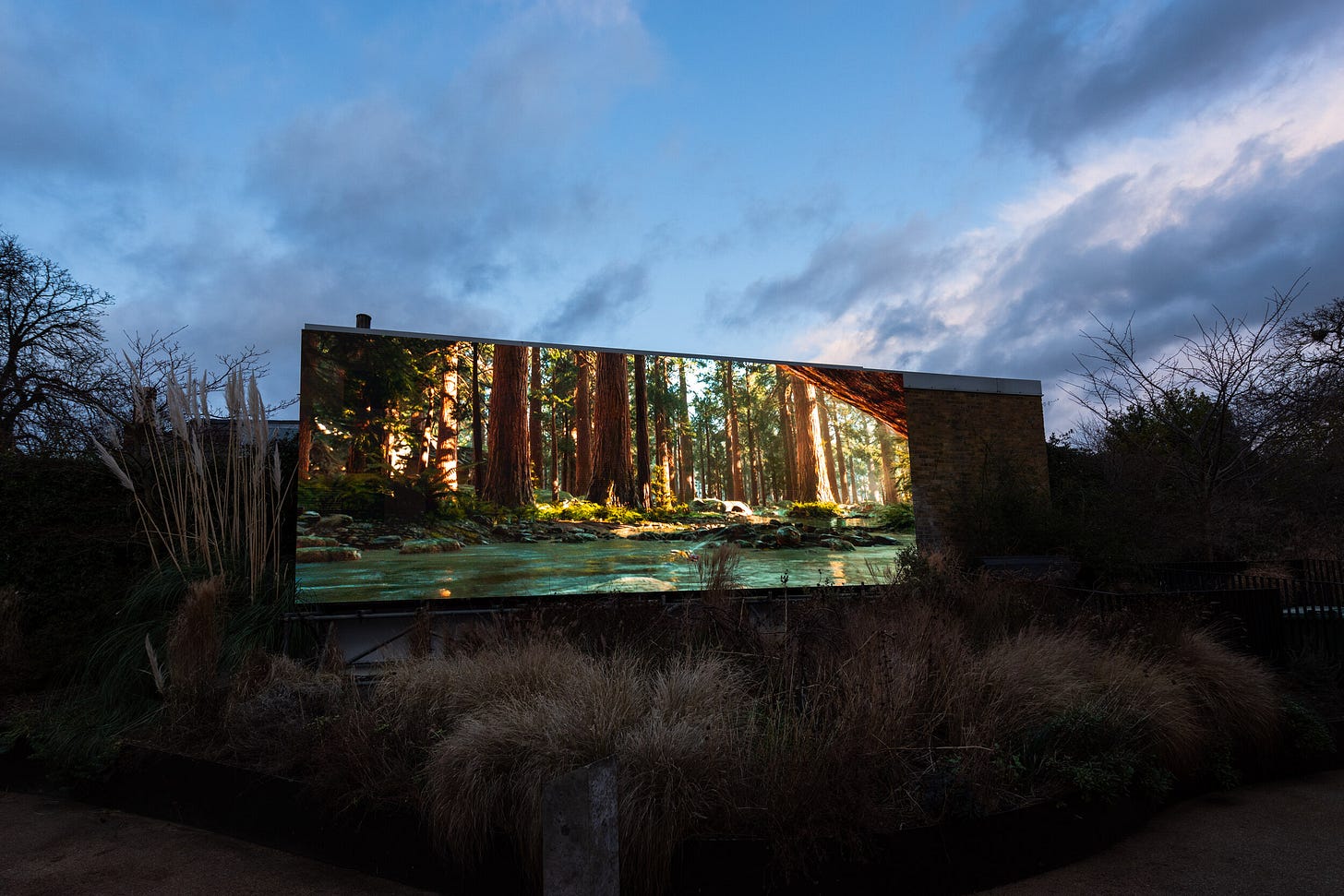On the new spatial language of digitalisation
A conversation with the established digital environmental artist Jakob Steensen about the possibilities of digital media such as games, VR and AR to alter our perspectives on the natural environment.
Dear friends,
Part of our digitalisation issue is an ongoing online program. This includes a library, with the first 27 hand-picked publications, podcasts and books now up for those of you who’ve already got yourself a digital-only copy of the issue. Just head to the library section, and explore what we most admire in the work of others! Another part is conversations, interviews and other tid bits. We had the amazing opportunity to also speak to one of the digital artist we admire the most, Jakob Steensen. Here’s how that conversation went…
culturala / Maria
Hi Jakob, it’s very nice to get the chance to have this conversation with you as part of our program for digitalisation. Just like a couple of the artists we’re featuring in the issue – Daniel Hengst and Dandara Hahn in particular – your work uses digital technologies for the sake of ecological practice. Basically, computer-based art that fights the climate crisis. Could you please tell me a little bit about how you started working with these questions in the very beginning?
Jakob Steensen
Hi! Glad to be part of this. It was never a rational question for me where I stopped and thought, oh this is a theme I should explore. I grew up with video games since I was a child, and started modifying them when I was 11 with Unreal Tournament 99 (A video game). I would change a video game level, turning concrete into water, making strange organic places.
I grew up living with my mom in a small town for a lot of my time. She was very busy, so I was left to myself alot. Daydreaming, exploring different landscapes with friends, was part of me then, and has remained till today, as I am friends with several field biologists and go on different trips.

My interest in the theme is more sensory, and about how natural environments can induce different deeper psychological states. Many natural environments are also vanishing, and with them, entire realms of perspectives and evolutionary intelligences different from ours as humans. I think it is incredibly important to document these and to share them with my audiences, both across exhibitions and as video games. I recently started uploading my works to the video game platform Steam, and we have a few thousand people so far downloading them there. I am really curious to extend more ambitious work into that realm.
culturala
Beautiful. Yes, very interesting. I also think it’s particularly interesting that your work is so driven by digital technologies. In what way, would you say, does the digital world offer new or unique pathways to creating pieces like Liminal Lands?
Jakob
I think of digital media as a new spatial language. We are trapping it, for now, behind concepts of media, games, VR. But in reality, what I personally think is happening, is that our civilization is in the process of making a new form of language, where sound, text, bodies, movement and space, all can seamlessly connect into what feels like single sentences. It is also capable of bringing into harmony multi different voices in single creations. So when it comes to art about environments, digital technologies allow us to explore them from a new spatial language: looking, moving, sensing and sharing perspectives on environments in new ways.

culturala
A lot of your work is concerned with precisely this: creating new perspectives through simulated natural environments, such as those you create in Catharsis, or through augmented realities such as The Deep Listener. These kinds of works are very much at the forefront of the more tech-driven ecoart movement. What do you think these types of works? Do you wish for them to encourage direct change, build understanding perhaps or something else?
Jakob
I am interested in multi-modalities – when the emotional, intellectual and corporal meet. In The Deep Listener, sounds of different species normally beyond human hearing – insects, complex bird calls, bats, tree roots – become interactive. You interact by moving your body and hands, physically, to interact with the work outside in Hyde Park in London. Both Catharsis and The Deep Listener were commissioned by the Serpentine Galleries in London as part of their technology and art program. I would like to think these works inspire some kind of change. But it is the emotional and sensory aspects I value mostly and find to be at the heart of it.

culturala
I’m also very interested to hear about the research process that your work builds on. Could you tell me a little bit about that?
Jakob
When I create an artwork I look for perspectives on life that I do not already know, and I look for them in natural environments by working with biologists and philosophers, who have some new unique perspectives on life. I then work to transform these perspectives into more spatial and psychological environmental experiences.
culturala
I wanted to finish with a question that we’ve been asking several of our contributing artists: how do you understand digitalisation? What does that word mean to you?
Jakob
Digitalisation to me insinuates transforming something into a virtual realm, from another place. I do not see it entirely like this, but more as a digital channel, like a portal, or a window. Something sensory, ephemeral almost. So digitalisation to me is the exploration of new emotional and spatial shared media, between us, our minds, bodies, and something else – like a new language unfolding in the present.
With love,
culturala and Jakob
Jakob Kudsk Steensen is an artist working with environmental storytelling through 3d animation, sound and immersive installations. He creates poetic interpretations about overlooked natural phenomena through collaborations with field biologists, composers and writers.
You can find more of his work on jakobsteensen.com or via his Instagram @jakob_kudsk_steensen.
Jakob’s contribution to the digitalisation program is one of support to the culturala community, contributing the first of a series of conversations with established artists working in the digital realm that we’ll be publishing in the coming months.


